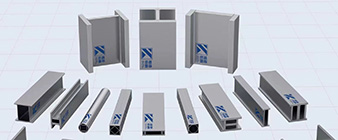S32205 (2205) has a higher chromium content (22-23%) compared to S31803 (2203) which typically has a chromium content of 21-22.5%.
S32205 also has a higher molybdenum content (3-3.5%) than S31803 (2.5-3.5%).
The higher alloy content in S32205 helps improve its corrosion resistance.
Corrosion resistance:
S32205 has excellent resistance to pitting, crevice and stress corrosion cracking compared to S31803.
The higher chromium and molybdenum content in S32205 provides better corrosion protection in harsh environments such as seawater, chlorides and various chemicals.
Mechanical Properties:
S32205 generally has higher tensile and yield strengths than S31803.
Typical tensile strengths for S32205 range from 620 to 860 MPa, while those for S31803 are approximately 550 to 750 MPa.
S32205 also has a higher yield strength, typically 450 to 650 MPa, compared to 400 to 550 MPa for S31803.
Resilience:
S32205 has slightly lower toughness than S31803, but still maintains good impact resistance.
The higher alloy content in S32205 may result in a slight decrease in toughness, especially at lower temperatures.
Weldability:
Both S32205 and S31803 are considered weldable, but S32205 requires more careful control of welding parameters to maintain the required ferrite-austenite balance and prevent the formation of harmful phases.
S31803 is generally easier to weld due to its lower alloy content.
Cost-Effectiveness:
S31803 is generally less expensive than S32205 due to its lower alloy content.
For applications where the slightly lower corrosion resistance and mechanical properties of S31803 are acceptable, it may be a more cost-effective option compared to the higher performance S32205.
-
 2024-9-20 Application of Ti Gr 7/3.7235/UNS R52400 Structural Stations
2024-9-20 Application of Ti Gr 7/3.7235/UNS R52400 Structural Stations -
 2023-12-11 Stainless steel structural profiles
2023-12-11 Stainless steel structural profiles -
 2024-9-16 What are the common applications of EN standard 1.4436 duplex stainless steel?
2024-9-16 What are the common applications of EN standard 1.4436 duplex stainless steel? -
 2024-4-03 Advantages and applications of stainless steel hollow profiles
2024-4-03 Advantages and applications of stainless steel hollow profiles -
 2024-9-21 S690QH/S690QLH Hollow structural Stations in Hong Kong
2024-9-21 S690QH/S690QLH Hollow structural Stations in Hong Kong -
 2024-9-25 1.4547 Super Stainless Steel for Structural Applications
2024-9-25 1.4547 Super Stainless Steel for Structural Applications -
 2024-9-16 2507 super duplex stainless steel Hollow Structural Sections
2024-9-16 2507 super duplex stainless steel Hollow Structural Sections



